According to Hindu legend (and Wikipedia), it is believed that the gods released a swan with a lotus in its beak. Wherever the swan dropped the lotus, the four-headed god Brahma would perform a great yagñá (a sacrificial ritual practiced since Vedic times). The place where the lotus fell was called Pushkar.
Believe it or not, it doesn’t matter, but what is certain is that Pushkar radiates spirituality, devotion and tranquility. Proof of this is the lake surrounded by ghats, the more than 400 temples that populate this small city in India, and the tranquility that can be felt when walking through its streets.
For us, it is one of the seven most spectacular cities in Rajasthan.
A ghat is a staircase leading to a river, pond or lake, and can be used for sacred ceremonies or for the daily hygiene of city dwellers.
Pushkar Lake is surrounded by 52 ghats, where devotees make offerings and bathe in its sacred waters. It is worth taking a walk along these steps to feel the religious fervor, although you should be careful with those priests offering you flowers to say a prayer for your relatives.
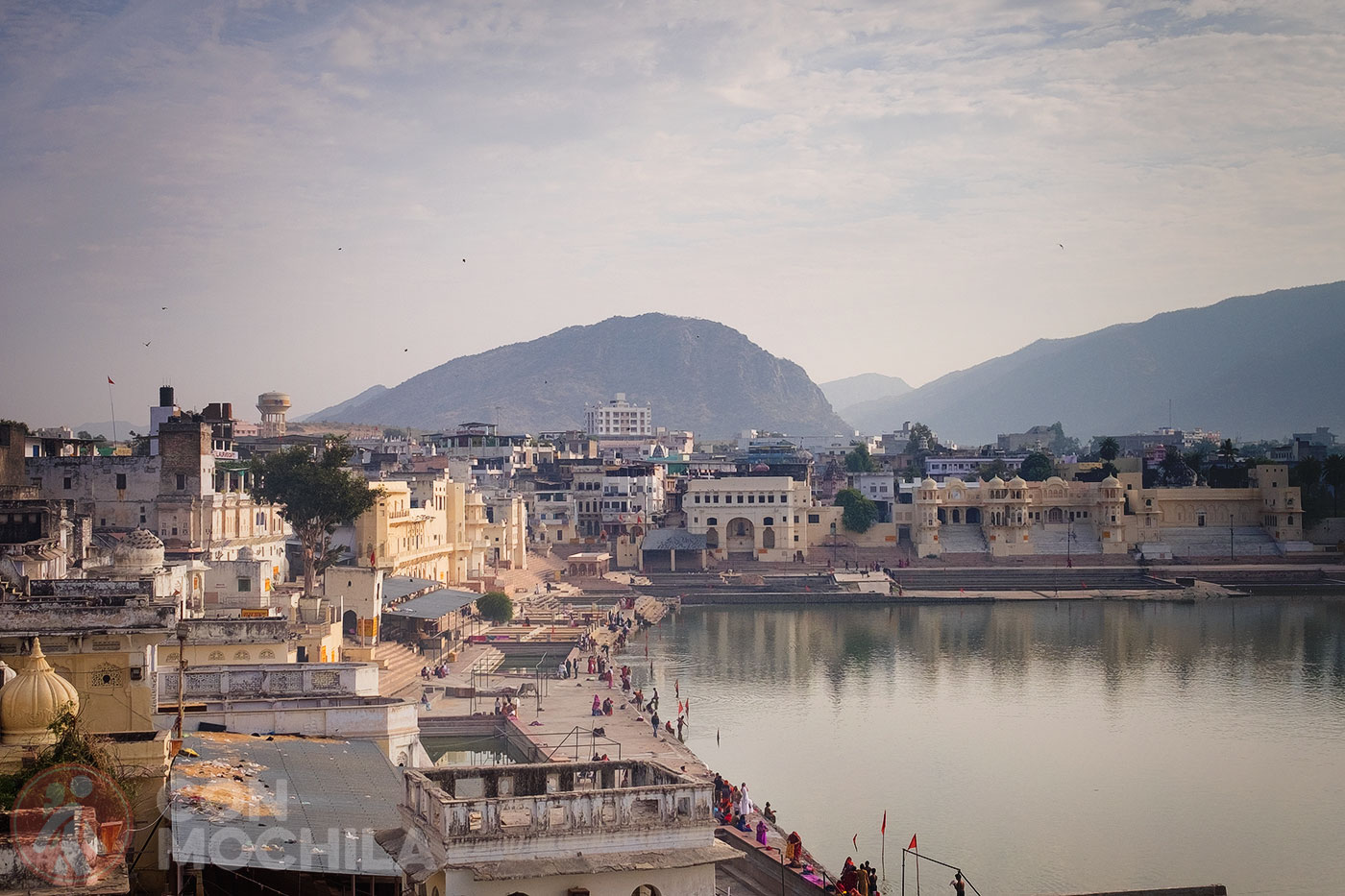
In the end, they’ll try to charge you a fortune for the offering. We didn’t have any issues because a couple of firm and blunt NOs stopped them from insisting. Be careful when taking photos, as they might call you out for it.
If you are thinking of visiting Pushkar, here are some recommendations similar to those of its neighboring cities in Rajasthan, such as Jaipur or Jodhpur. The best time to visit Pushkar is during its pleasant and cool winter.
We know that the subject of visas can be somewhat confusing, especially for India, where obtaining one is an essential requirement for entry. In the article on how to obtain an Indian visa step by step (coming soon) you have information on how to apply for one online for up to 5 years.
It’s essential to travel to India with comprehensive insurance. We were among the first to offer the popular IATI discount, and you can now get it with Heymondo Travel Insurance as well.
You can find more information about both companies through the links provided above, or you can access the discount directly using the buttons below (in both cases, you’ll see the reduced final price on their website):
While many hotels, guesthouses, and restaurants in India offer free Wi-Fi, some travelers prefer or need a constant connection. We’ve included details on obtaining a eSIM India card with unlimited data (from Holafly) or with fixed data but cheaper (from Saily).
If you want to get it directly, here’s the link (with a discount) for both companies:
As in many other cities in India, the train is one of the best options. There are connections from major cities in India such as Delhi, Ahmedabad, Agra or Calcutta, from where trains arrive to Pushkar. Train is also available for slightly shorter journeys from other cities in Rajasthan, such as Jaipur or Jodhpur.
You can take a look at our article about trains in India with all the information you need about sleeper classes (3rd class), and we leave here some links to the most popular trains to get to Pushkar:
A good way to get to Pushkar is by taking the local bus from Ajmer (where you will find daily connections to most cities in Rajasthan and/or Delhi), just a few kilometers away. The journey costs less than 20 rupees and takes about 45 minutes. The beautiful views on the way to the city are well worth the trip, apart from the modest price.
On the other hand, if you want to go more comfortably, you can take a taxi that will take you directly to your hotel in Pushkar.
The nearest airport is Jaipur, which is about 3 hours away by road. Here are some links to help you plan your trip:
Pushkar is home to a number of temples, the most important of which is the Brahma Temple, built in the 14th century, one of the few in India dedicated to the Hindu creator god. Although you can go inside to visit it, it is a shame that cameras are not allowed, so you can photograph its stone and marble slabs, as well as its colors.
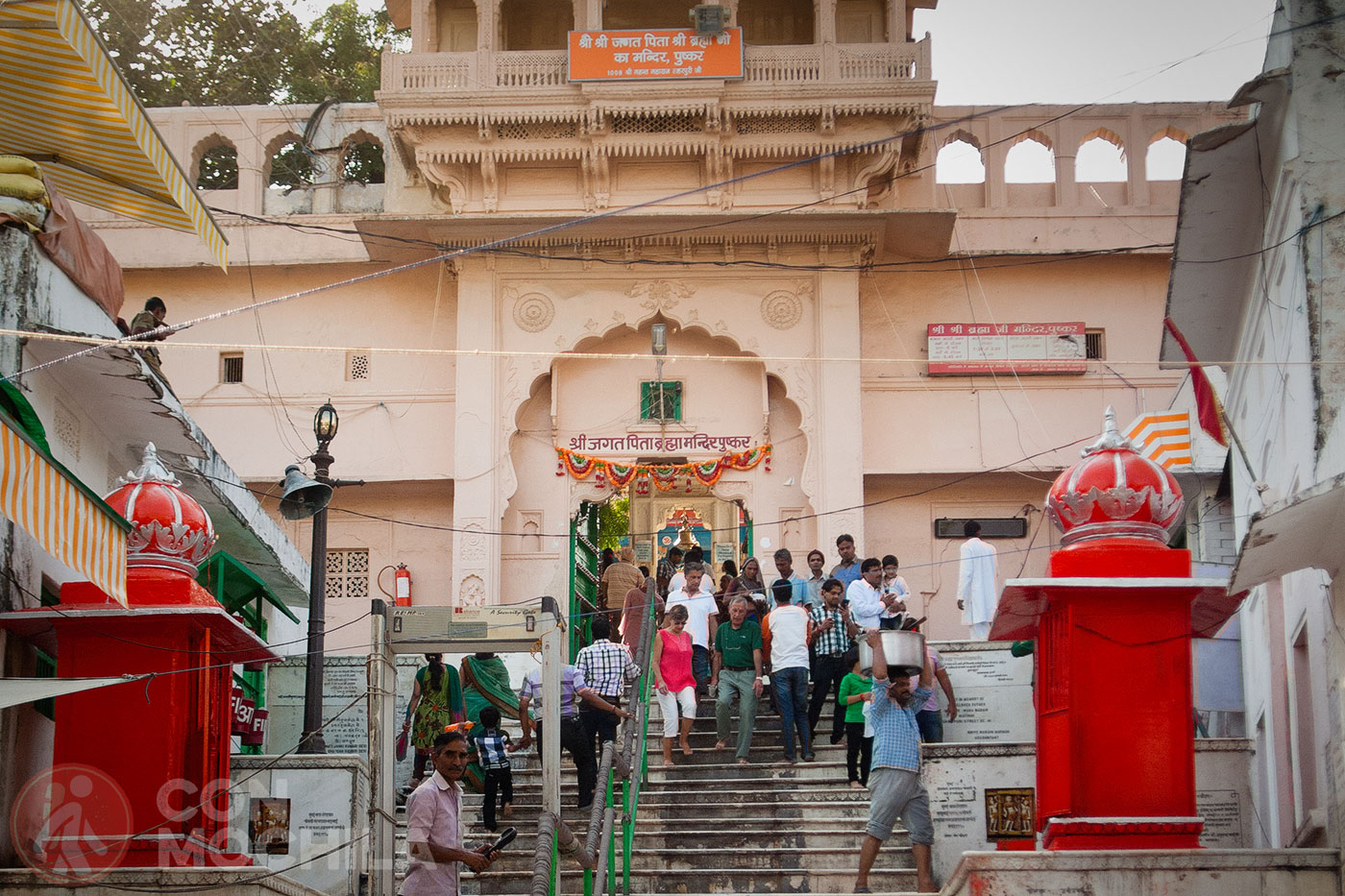
The cows deserve special mention. Being a sacred place with narrow streets, it seems that there are more than enough of them, so you will stumble upon them almost constantly.
Situated atop Ratnagiri Hill, the Savitri Mata Temple is dedicated to Goddess Savitri, one of the two wives of Lord Brahma along with Gayatri. It was built in the early 20th century by a family, though its images are said to date back to the 7th century.
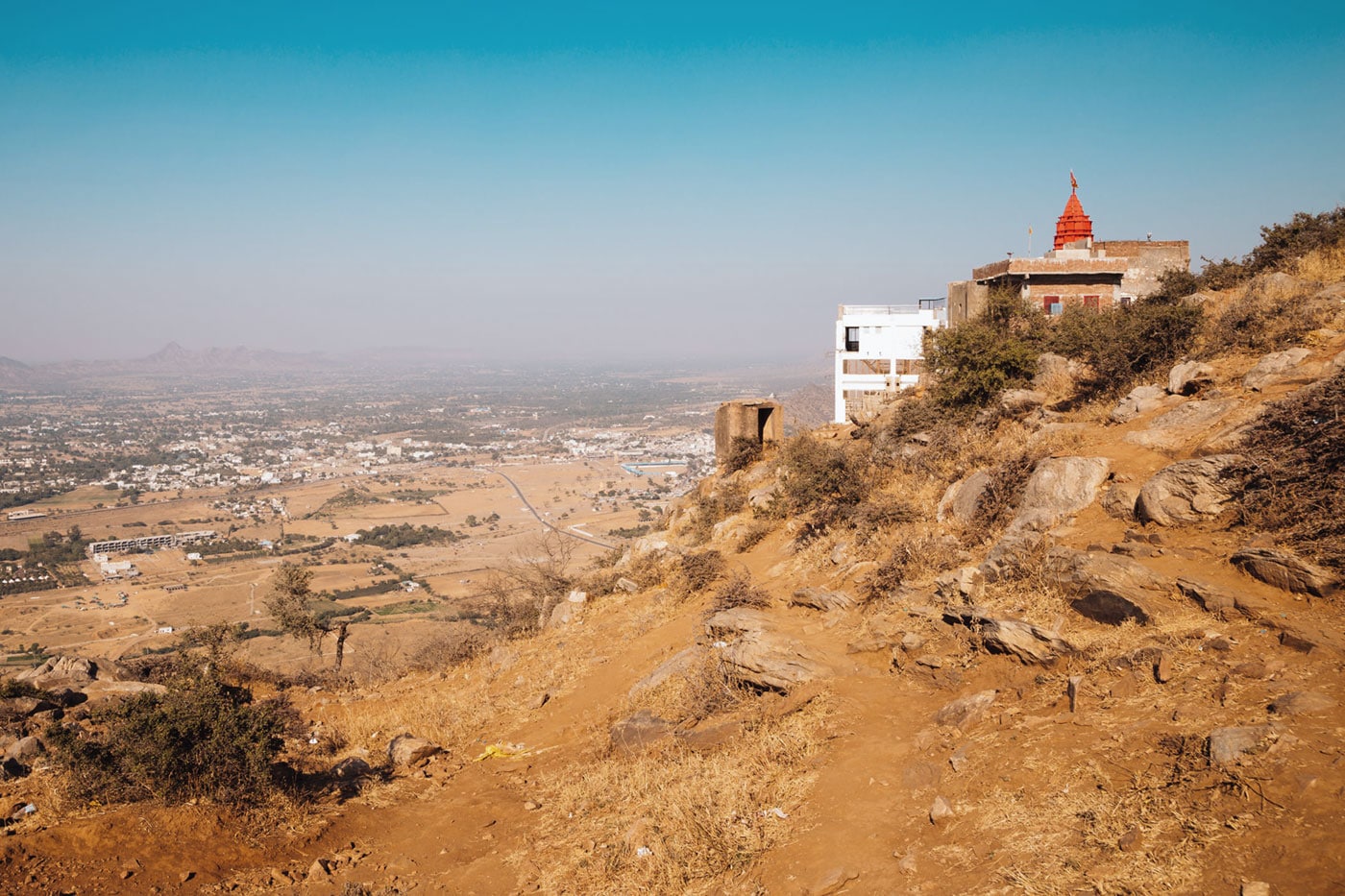
To get to the temple, you can take a funicular or the 200 steps that lead to the sanctuary for an hour, as many of the pilgrims who come there do.
Leaving the busiest places, you can take a stroll through the winding streets around the lake or the bazaar, many of them with narrow, old-looking facades, as if they hadn’t been painted in years (or maybe that’s what’s happening to them…). People go about their lives in the doorways of their houses or shops and it’s a good place to take photos.

There are some buildings with impressive architecture and other houses with fantastic interior courtyards through which we can see how life works in this city.
The Rangji Temple is said to have been founded in 1823 by Seth Puran Mal Ganeriwal of Hyderabad, and is dedicated to Rangji, the reincarnation of Vishnu. It is a blend of Rajput, Mughal and Dravidian architectural styles. There are several shrines within it dedicated to different deities, and priests perform various rites within the Hindu religion.
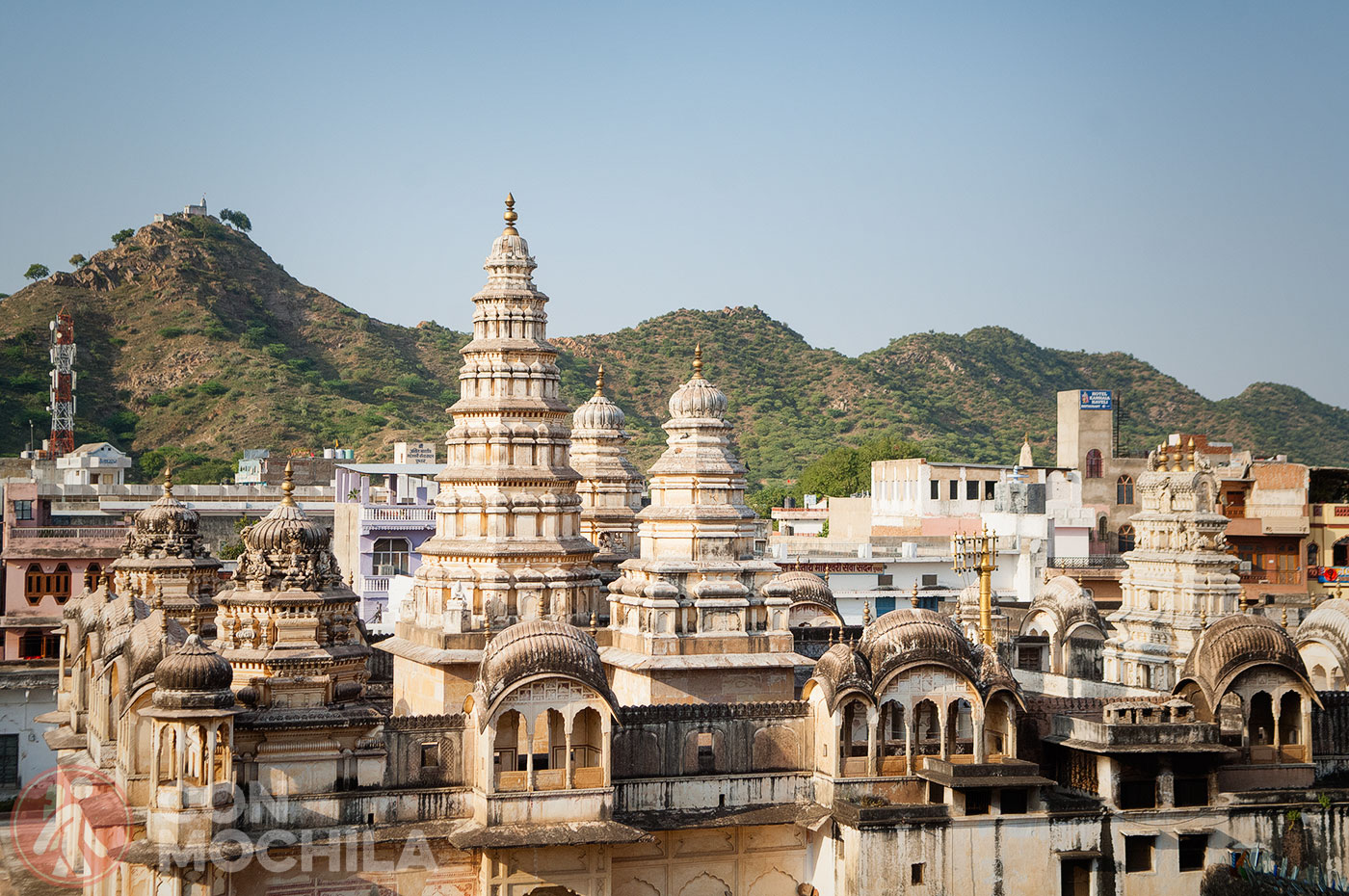
If you visit it, it is normal to see one of these priests reciting a mantra and the pilgrims repeating it.
On top of a small hill, we find the Pap Mochani Temple with beautiful views of Pushkar Lake. In about 15 minutes along the back of the mountain, you can climb to the top and it is a perfect place to watch the sunset with Pushkar, the lake and all the temples in the background.
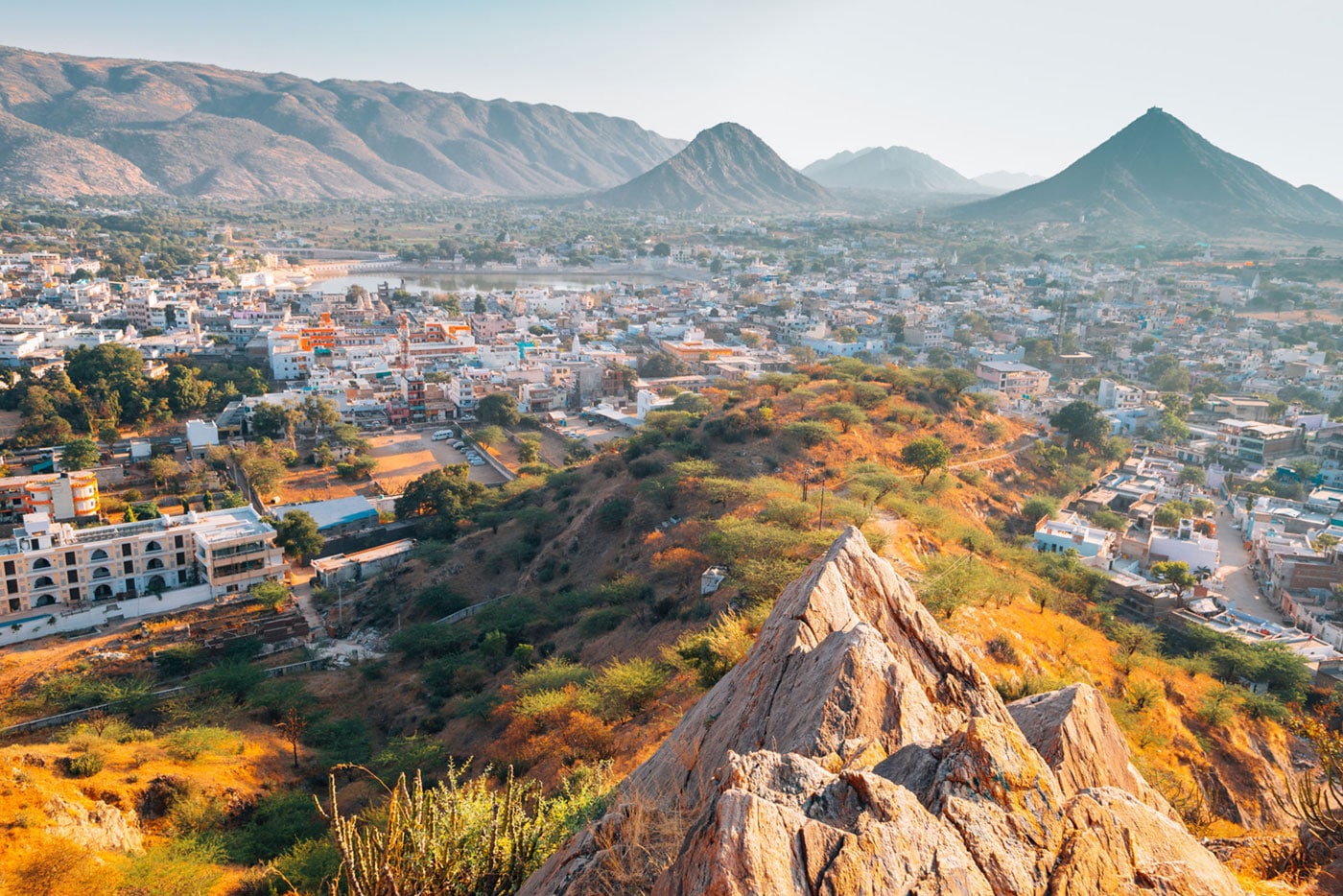
The temple is dedicated to the deity Ekadashi Mata, and the temple is said to “cure” the sins (pap) of believers.
Built as a guest building for Maharaja Man Singh I and also for him on some of his visits to the city, Man Mahal is a palace with beautiful views of the lake and the ghats, its architecture reflects the Rajasthani style of construction.
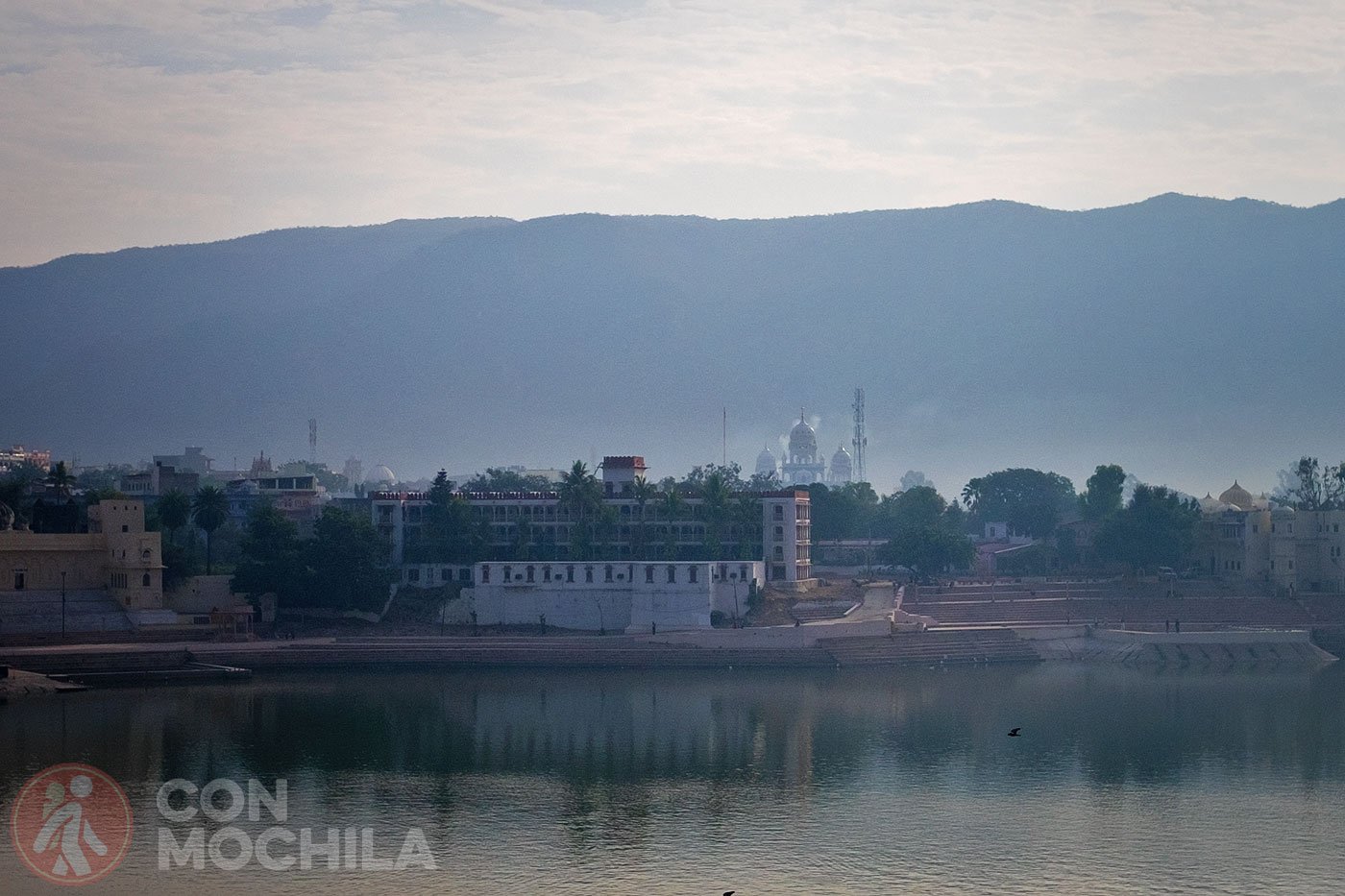
It has now been converted into a luxury hotel, Pushkar Palace, but it seems that you can visit its majestic gardens and see some of the temples overlooking the lake from another perspective.
Pushkar’s market, Sadar Bazaar, near the lake, offers visitors a wealth of shops where they can buy everything from handicrafts to clothes, silver jewelry (they say that one of the best places to shop is in Pushkar) and paintings. Despite the hustle and bustle of people, walking through its streets is not at all stressful. Everything flows slowly and the walks are very pleasant.
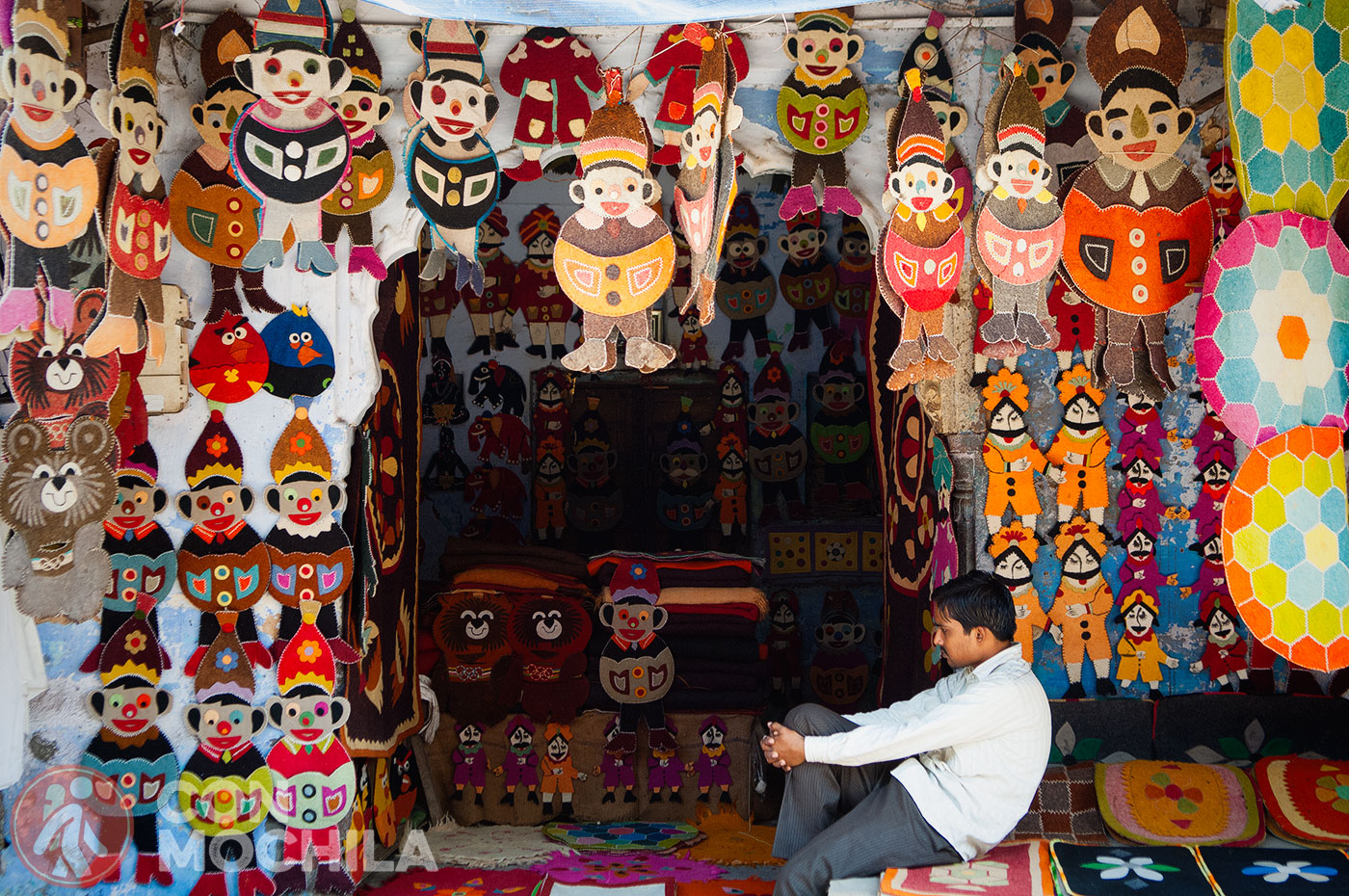
You can also have a lassi or buy some food from the street stalls.
Another side of Pushkar is the nightlife. Life doesn’t stop in India even when the sun has set, and this is no different here. You have to wander around the streets to enjoy the dimly lit atmosphere and also find the most picturesque situations.
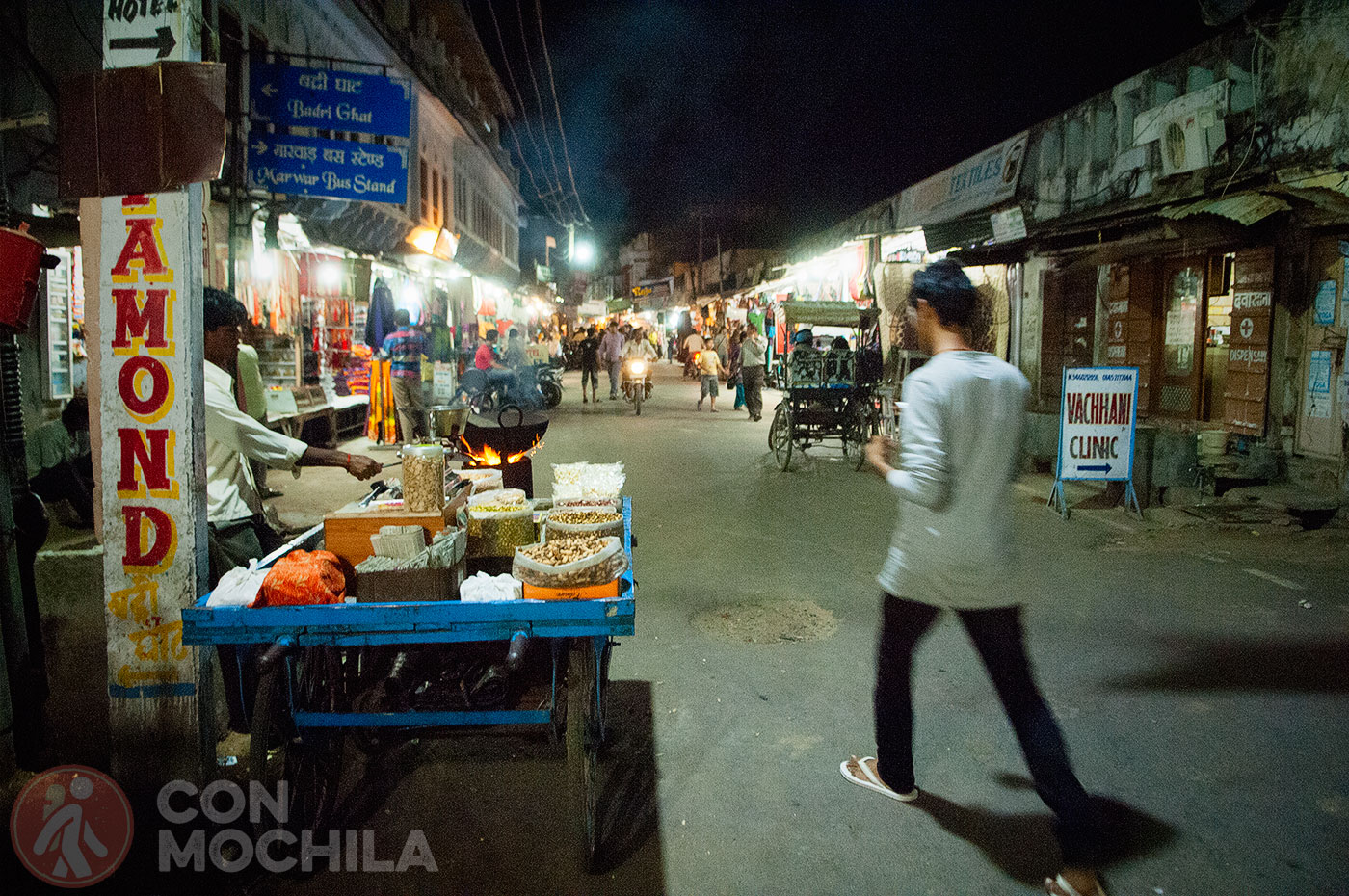
A nice experience is to go to the lake at night to see some of the surrounding buildings lit up, meet locals strolling around and order some street food.
One of the most important cities in Rajasthan is Ajmer, with over half a million inhabitants and surrounded by the Aravali Mountains. Usually, everyone visits Ajmer as a starting point to Pushkar, which is about 11 km away. In this city you can also visit some interesting places such as the Taragarh Fort, several Jain temples, and lakes such as Anasagar or Foy Sagar.
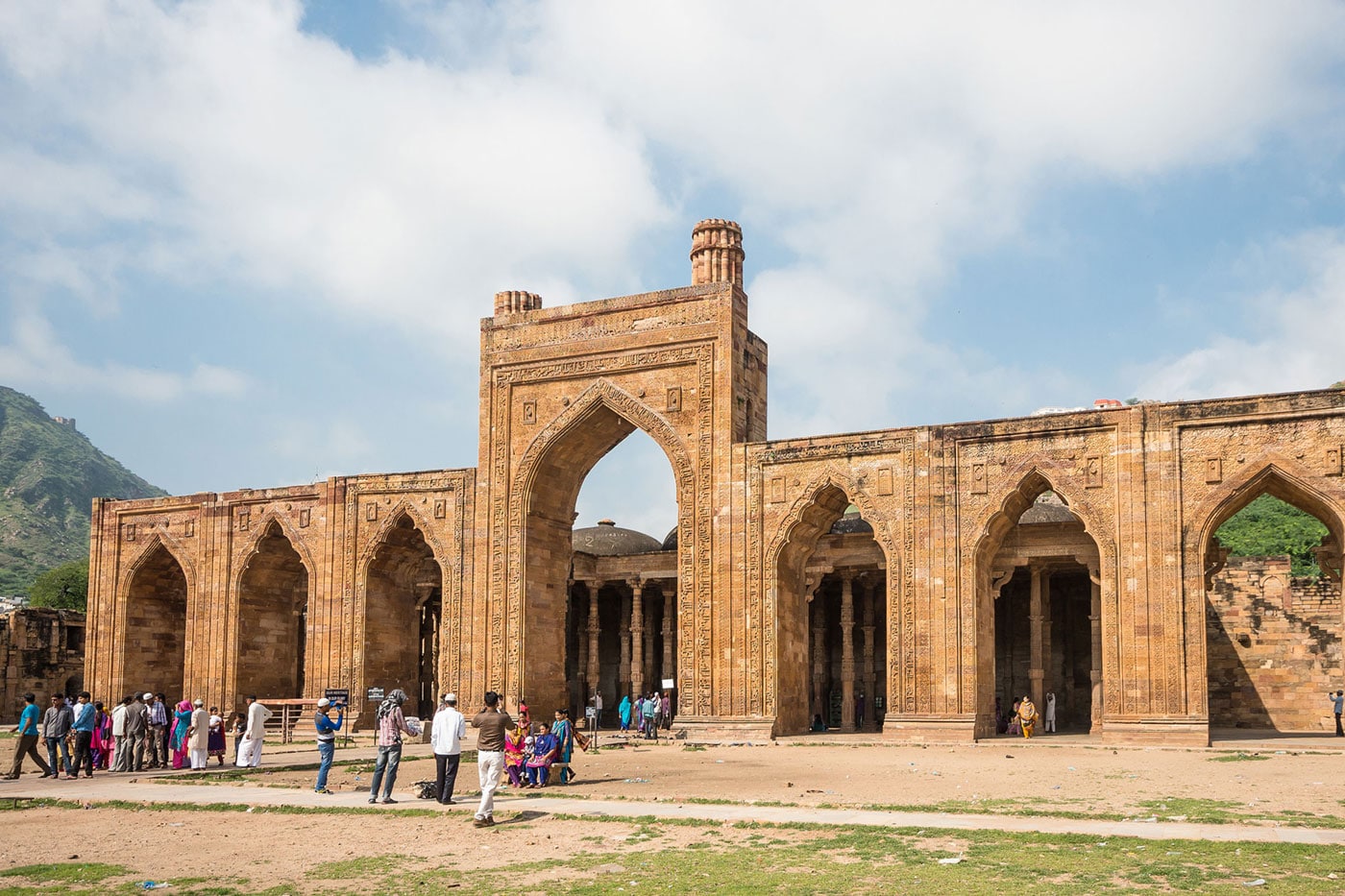
It is famous for having a shrine of Khwaja Moinuddin Chishti, an important pilgrimage site for Sufi Muslims.
The Thar Desert covers a large area of western Rajasthan and is home to 40% of the state’s population, making it one of the most populous states on the planet. You can travel to Jaisalmer to find an arid landscape with occasional isolated dunes.
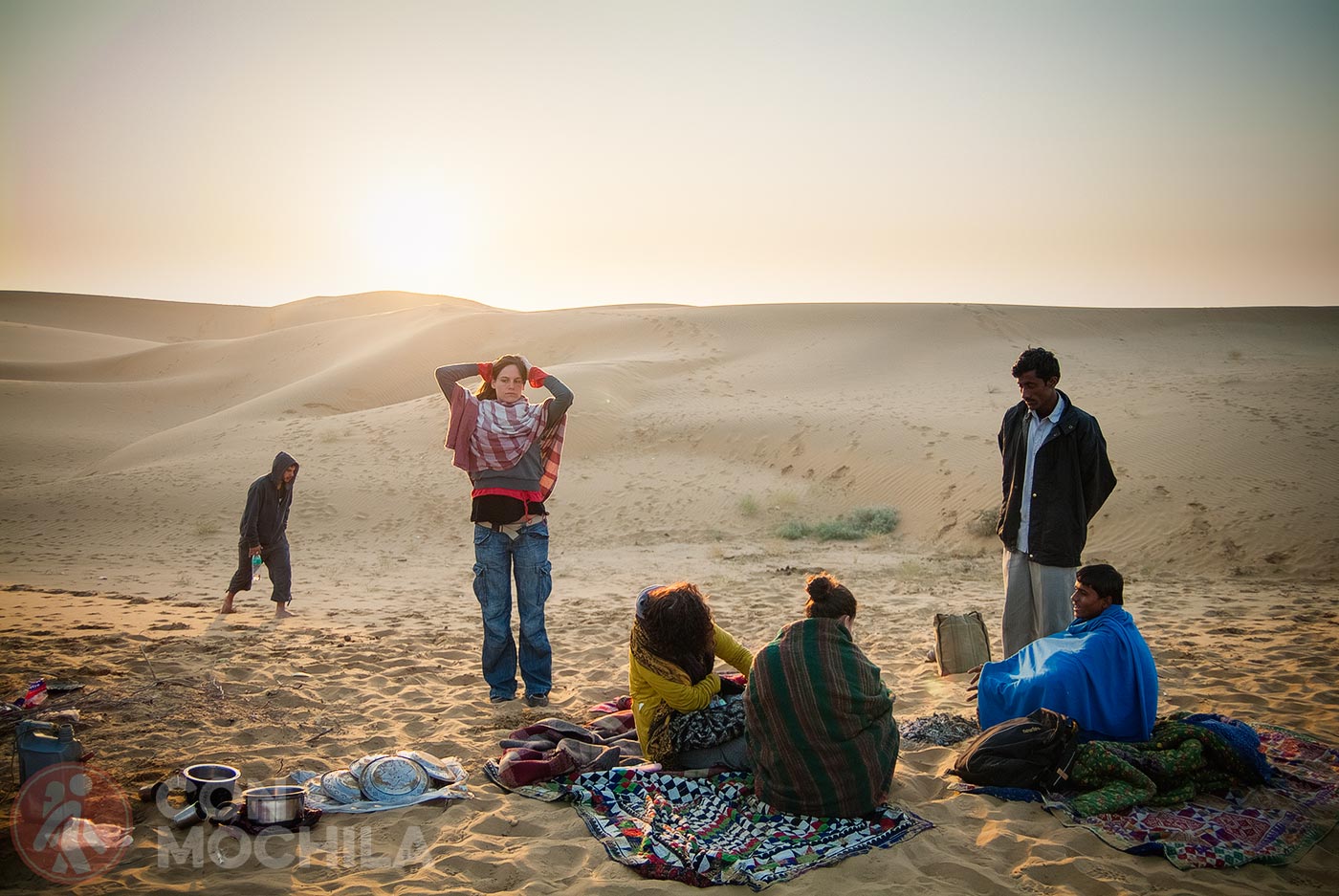
Antelopes, gazelles, foxes, snakes and lizards coexist in protected areas alongside nomadic shepherds and other settlements.
ATTENTION! If you are planning to go on a desert excursion, check out our section on camel treks below.
Being in this area of Rajasthan, it was impossible for us not to visit the Ranthambore Tiger Reserve, since we knew that it was the perfect place to spot tigers as well as crocodiles, macaques, hyenas, deer, jackals and wild boars, among others.
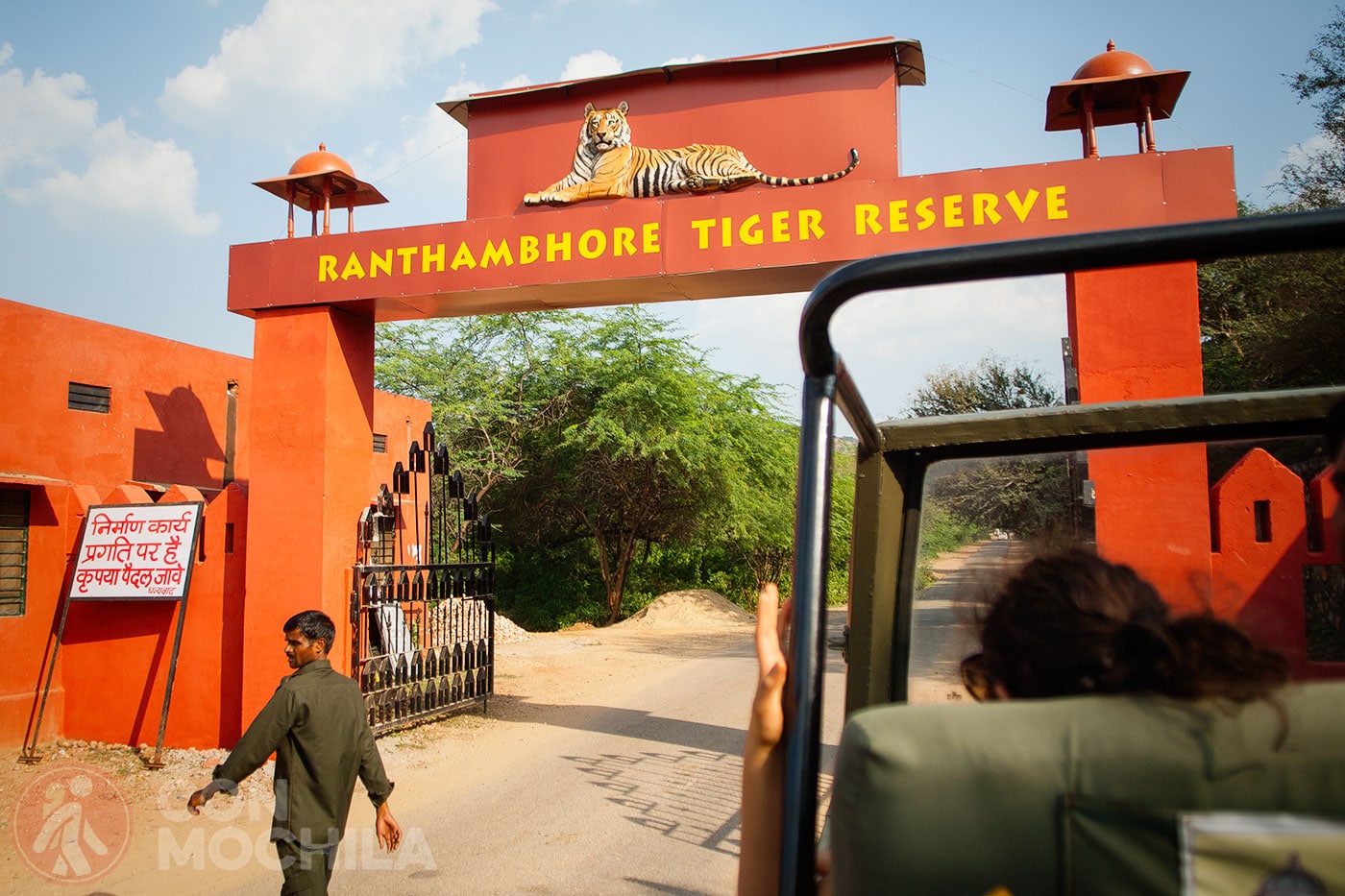
The reserve is located near Sawai Madhopur, 2 hours by train from Jaipur, although we made the journey by local bus in about 5 hours. In the link above we tell you step by step how to get to the Ranthambhore reserve and how to obtain the documentation to enter easily and cheaply.
If your base is in Jaipur, we recommend these options, so you can choose the one that best suits your trip:
If you are in Jodhpur, you can also take a full-day self-guided tour to Pushkar from Jodhpur with private transportation.
The Everest Hotel did not disappoint us the first time we visited Pushkar, as we had read quite a few good reviews online. Located in one of the city’s alleys, it has a terrace where you can see almost all of Pushkar, as well as a fairly decent restaurant. The rooms are austere, but clean and with windows. It also has free Wi-Fi.
On our last visit to the city, we stayed at the Bharatpur Palace Hotel, next to the ghats.
You can also take a look at these recommendations:
Desert treks have become a very popular tourist activity, visiting some small villages along the way and sleeping rough in the dunes. Most of these tours offered in Jaisalmer are done by camel, and, besides not being the most comfortable way to do it, not all companies treat their animals equally.
We recommend that you read this valuable information from FAADA before booking any tour.
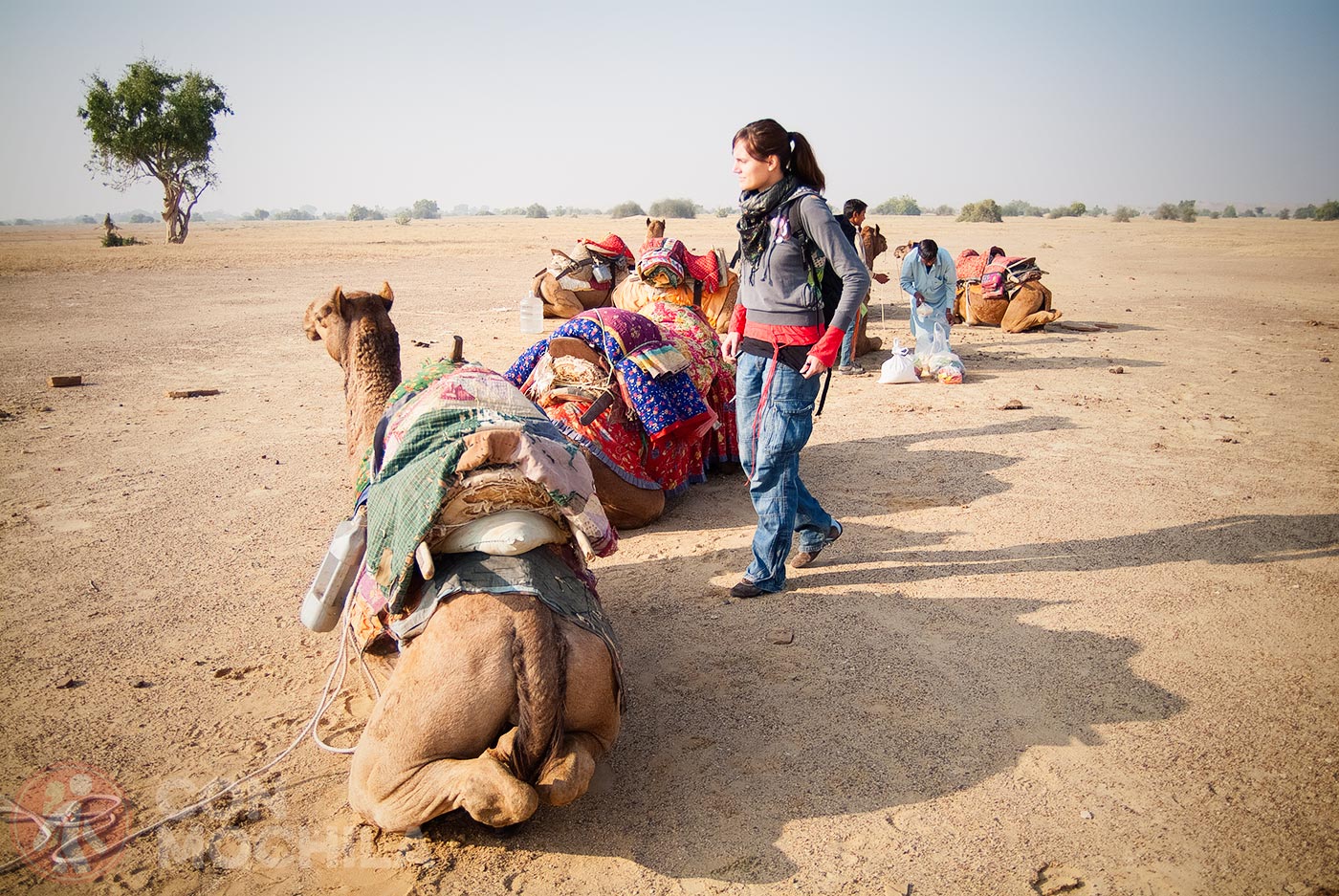
Pushkar is not a very big city, so most of the temples and the city center can be visited on foot. To explore the surrounding areas, you can rent bicycles or motorbikes.
Click on the image and it will take you to a new Google Maps window with all the points of interest to travel around Pushkar.